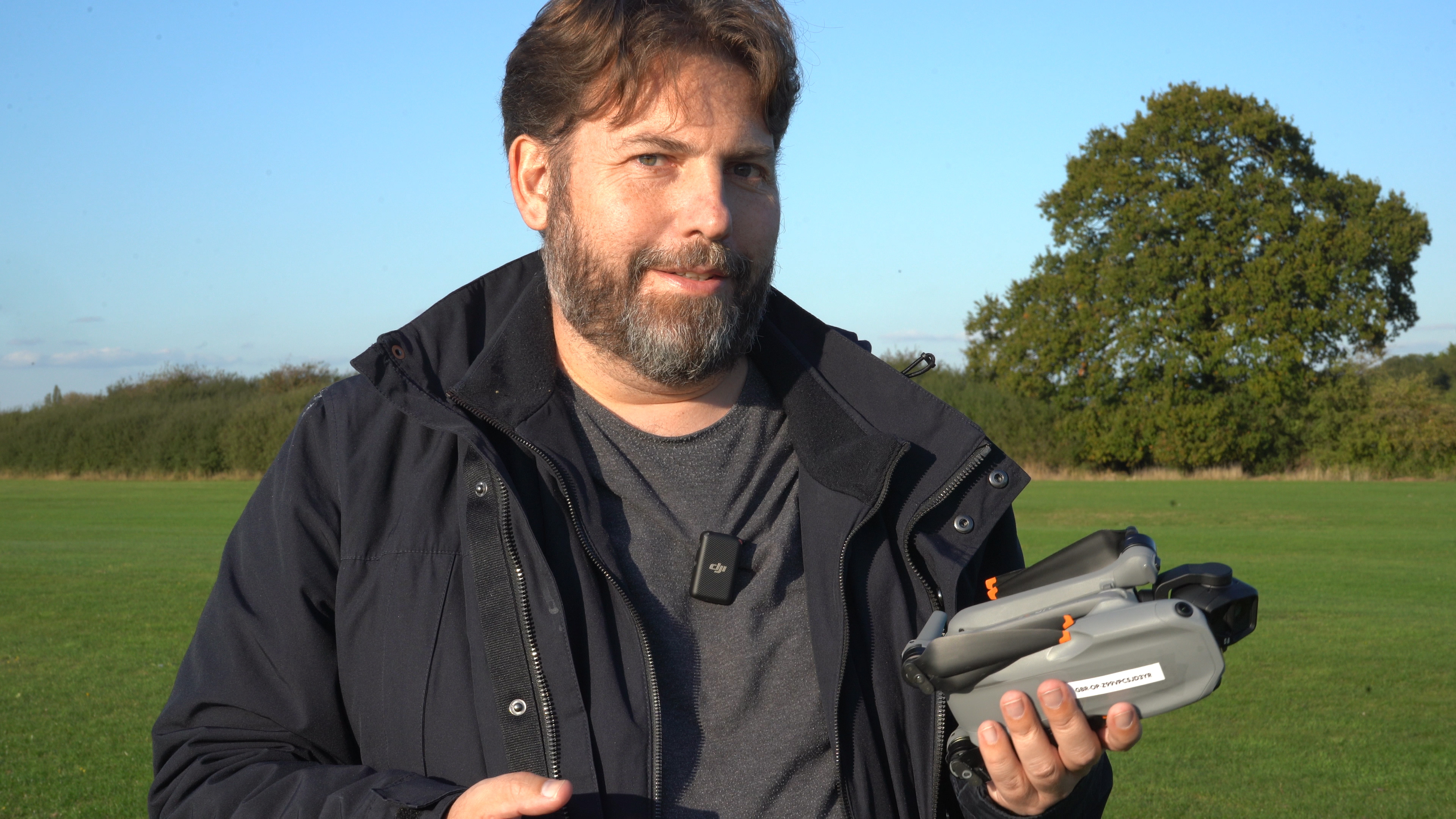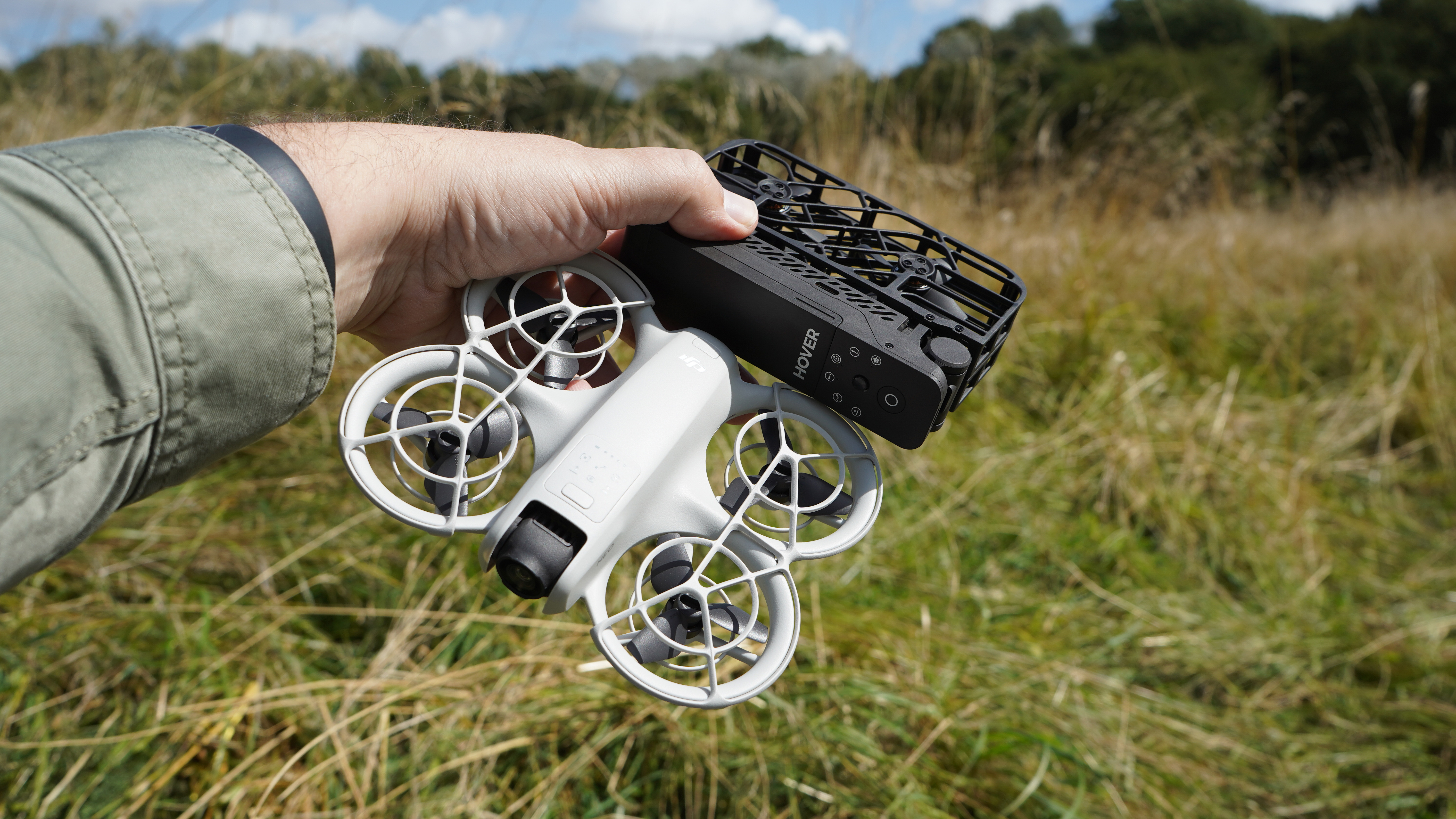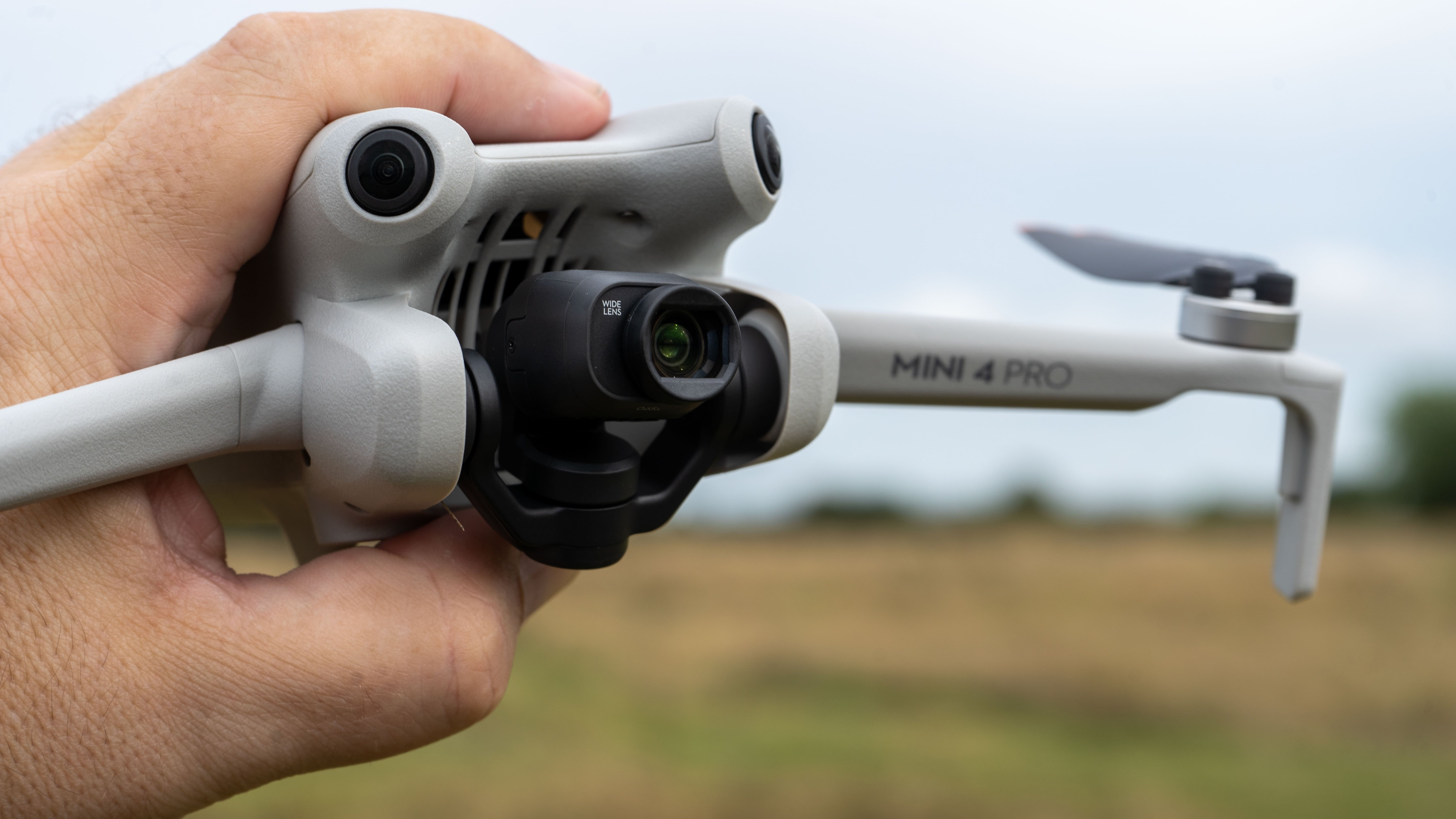2025 will be the year that changes drones – but for better or for worse?
For a lot of reasons, 2025 is going to be the year the drone industry gets a long-awaited shake-up. Will things be better as a result?

It's been a really exciting 2024 in the world of drones, not least because of the rollercoster in the world's biggest economy (USA) threatening to ban the world's biggest drone company (DJI) – due, in no small part because it comes from the rapidly advancing 2nd biggest economy China!
It wasn't just the politics though – the tech has been the real star because, after, let's say, a period of adjustment, things seem to be getting really innovative again. That's exciting in any area of technology, but in a world where we've had to get excited by a new button on a phone and different focussing algorithms on cameras genuinely significant changes to the external design of a product are starting to feel rarer and rarer.
Folding drones are here to stay!
The HoverAir X1 – which I actually tested back in September 2023 – has now set a new design template which we've seen copied not only by the new HoverAir X1 Pro Max but in a rudimentary way by the DJI Neo. Sure, the later didn't manage the folding elegance, but the inspiration was still apparent to my eye; the emphasis on safety in this low weight category.
@digitalcameraworld ♬ Akon's Beautiful Day - Akon
The reason folding drones are here to stay is that HoverAir made such a brilliant one, and went on with the late 2024 HoverAi X1 Pro Max to show that it was also possible to put a surprisingly capable camera in a device of this kind of size (and keep the folding guards). That suggests that designs like this aren't going to stop coming in 2025 for consumers because it's increasingly clear that...
Prop guards matter now!

Protecting people – especially vulnerable younger users – from any risk of impact damage is important and to expand the drone market to more casual users you've got to expect slightly less caution than when serious trained users are out there.
The two solutions are to physically restrain the propellors. This is something that's been happening a little anyway because there are, in some designs, aerodynamic advantages (check the cinewhoop designs like the Avata 2) but also because fast rotating narrow, sharp pieces of plastic (or carbon fibre, as on some of my bigger drones) can be pretty dangerous.
Another possible 'casual user' is, of course, 'AI' in its various guises. DJI and HoverAir have bother offered the controls a little more into the hands of the electronic brain in 2024 – don't expect that trend to stop. If there's one thing we know about AI, it doesn't get every decision spot on and if there's something else we know, no AI creator wants to be sued for any injuries caused. So, to grow the market and to make more room for AI, you need to reduce rick points (even at the expense of some weight and flight time).
Get the Digital Camera World Newsletter
The best camera deals, reviews, product advice, and unmissable photography news, direct to your inbox!
Which leads me on to my next point...
249g (0.54 pounds) is no longer the only limit that matters!

The other big lesson from HoverAir's arrival and DJI's swift alignment is that it is no longer essential to push right up against the widely accepted legal limit. For a a few years drone development has been hampered by, essentially, being refinements of the DJI Mini – the first viable 'ultralight' which came out back in 2019.
Sure, there have been refinements. DJI has definitely produced low, medium & high tiers in this category, and innovations have included the portrait-capable camera of the Mini 3 Pro and Mini 4 Pro. But it has all been pushing against a legal limit.
In 2025 I think it's fair to expect people to keep pushing at that envelope – we've certainly covered Mini 5 Pro rumors – but we now know from the 135g Neo and the 125g HoverAir X1 that you can slash that weight still further and still do useful things, so I think we can expect to finally see drone companies think more about the needs of the craft than the rules (even if it took five years).
What about the high end?
The consumer market drives change fast, but other drones have happened fast too. Faster than, say, cameras. The photographer/video-maker's workhorse Sony A7 III in 2018 launched in 2018, around the same time as the DJI Mavic 2. Both had 4K video as a major feature. Sony has managed one update since, but the Mavic 3 (2021) and Mavic 3 Pro (2023) have come along since and the former at least was a revolutionary update, bringing substantially improved the specs (more and bigger cameras).
This year – if the rumor mill is to be believed – we're expecting to see a Mavic 4 and the circulating specs are positively insane, even hinting at a hover time of 55 minutes.
Certainly, again, from circulated leak images, a more exciting 'back to the drawing board' approach to design seems to be happening, which suggests the possibility of a drone which can tip its camera upward for sophisticated 3D surveys.
There only might be a drone ban review in America...
So yes, a badly drafted piece of legislation to ban DJI drones has been removed from the NDAA for now, but don't expect the wording added in its place – calling for a review within a year of all "China-made drones" – to be especially good news for the company, especially because the default – if no review takes place – is that DJI will be banned the year later.
In other words, if no government department can be bothered to do any admin, 2025 is DJI's last year to get new products approved by the FCC in America.
So are drones getting better in 2025?
Yes, you betcha. For 2025 it looks like the whole world will get a decent chance at getting the worlds best drones and, finally, the impact of the weight regulations has taken a backseat to design. Rumors about new designs are all a lot more interesting again because they're not just the same models with minor tweaks. We're seeing real innovation from not just DJI but others too.
It's also nice to know that there will at least be a brief hiatus on the politics. It'd be nice to be able to promise a happy ending, but 2025 – at least – promises the best aerial tech for years (and some already stunning options like the Neo and Air 3S out before the new year too).
You may also like...
Lap up the experience of being a true Rock and Roll photographer with our Christmas Interview – meet Slash, Ozzy & Nirvana, and check out my guide to the best beginner drone and the best camera drone.

With over 20 years of expertise as a tech journalist, Adam brings a wealth of knowledge across a vast number of product categories, including timelapse cameras, home security cameras, NVR cameras, photography books, webcams, 3D printers and 3D scanners, borescopes, radar detectors… and, above all, drones.
Adam is our resident expert on all aspects of camera drones and drone photography, from buying guides on the best choices for aerial photographers of all ability levels to the latest rules and regulations on piloting drones.
He is the author of a number of books including The Complete Guide to Drones, The Smart Smart Home Handbook, 101 Tips for DSLR Video and The Drone Pilot's Handbook.
